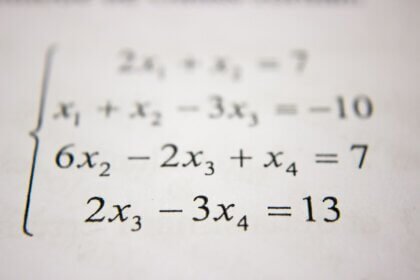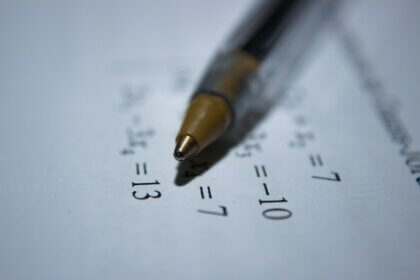Brilliant math hacks that are easy to learn
Math can be fun if you know a few tricks. If not, it can give you nightmares and sweaty palms. Learning a few math hacks should be fun. But some people will try to share a math hack, only for the tip to be more complicated than using the actual formula taught in school.
In today’s high-tech works, computations get a little trickier all the time; at times, you may even need the help of an online calculator. Although you may need a calculator for more complex problems, there are other tricks out there to use. Multiplication and division have the sweetest math hacks that you can try. With the help of no fuss tutors – math tutor you can learn many such hacks.

You can put the calculator away for a while if you can learn these few tricks we have compiled for you.
Multiply any number by five or its multiple of 10
Let us assume you want to know how much it will cost you to buy 50 units of a product selling at $38.
Step one: Add a zero to the number you are multiplying with. In this case, 38 becomes 380
Step two: Divide the result by two. In this case, divide 380/2=190.
Step Three: Add a zero to the result if you are multiplying by a factor of 10, two zeroes for factors of 100, and so on. In this case, add one zero to get 1900. You can try it with any number irrespective of size. If you are multiplying by five, you will not need to add anything to the result.
You can apply the same rule when multiplying any number with 25 and its multiples of 10. In this case, instead of dividing by 2, you will divide the amount by 4.
Example:
Assume you are told to multiply 25 by 180. You will add a zero to 180 to make it 1800, divide 1800 by 4 to make it 450, then add a zero at the end to make it 4500. Why are we adding a zero here? Because 25 has a tens column. If we were multiplying by 2.5, we wouldn’t add that.
Multiplication by simplification
Let’s say you are multiplying two numbers that have multiples of two or three. For example, 125 multiplied by 64 are all multiples of 4 and 5, while 16 multiplied by 250 are multiples of 2. The trick here is to do the opposite of what you do to one number. Assume I want to multiply 64 by 125. I will divide 64 by two and multiply 125 by two. I will have 32 multiplied by 250. I can go further by doing the same as before to get 16 multiplied by 500, then eight multiplied by 1000 to get 8000 as the answer.
Division through simple multiplication
Assume you have a large number that you have to multiply by five, 25, 125, and their multiples of 10. You will multiply the number by 2 for 5, 4 for 25, and 8 for 125, and then place the decimal point appropriately.
I will divide 450 by 5, 25, and 125 using the same method. For 450/5, I will multiply 450 by 2 to get 900. I will eliminate one zero to adjust for the decimal point. For 450/25, I will multiply 450 by 4 to get 1800. I will then adjust by removing two zeros to get 18 as the answer. For 450/125, I will multiply 450 by 8 to get 3600. Will then adjust backward by three decimal places to get 3.6.
Simple multiplication of numbers by 11
Assume you want to multiply 57 by 11, put 5 and 7 apart in an answer column, then add the two numbers and place them in between. This trick only works if the sum of the numbers is less than 10. If it is more than 10, you will go three steps.
Step one: Put the number with space in between. In this case, I will put 5 7 in the answer box.
Step two: Add the two digits and put it in between the numbers. I will add 5 to 7 to get 12, which is bigger than 10.
Step three: If the number is more than 10, add it to the first digit. Notice the placeholders mean that you will add the first digit as a ten. In our example, I will add 50 to 12 to get 62. The answer will be 627.

You can learn many simple maths hacks online. The idea is to get the concept and ensure that you know instances where it works and those instances where it does not work. Though some may think that these hacks are unnecessary, you can never know for sure when they will. But who cares, for those who love math, a new trick or two is always welcome.



